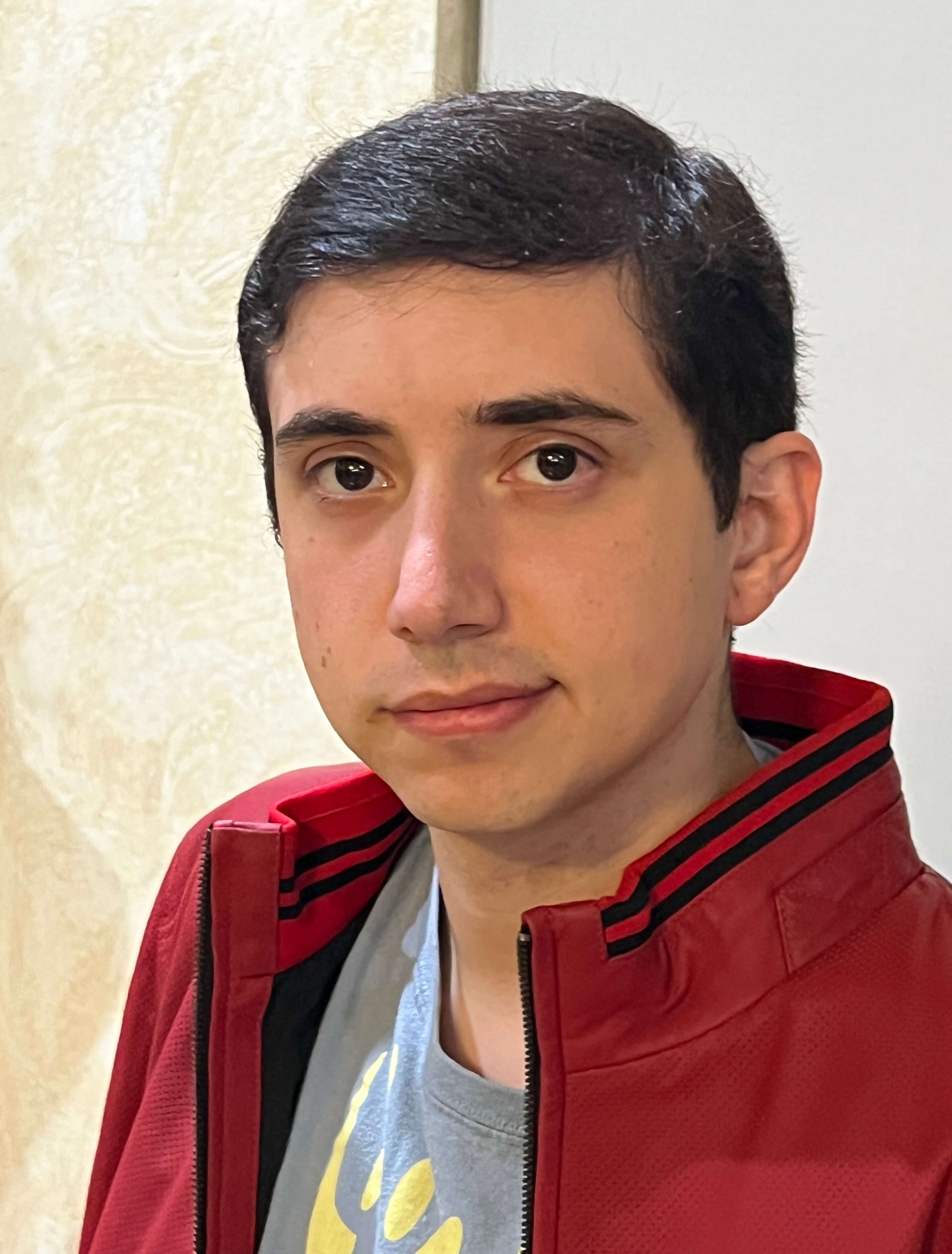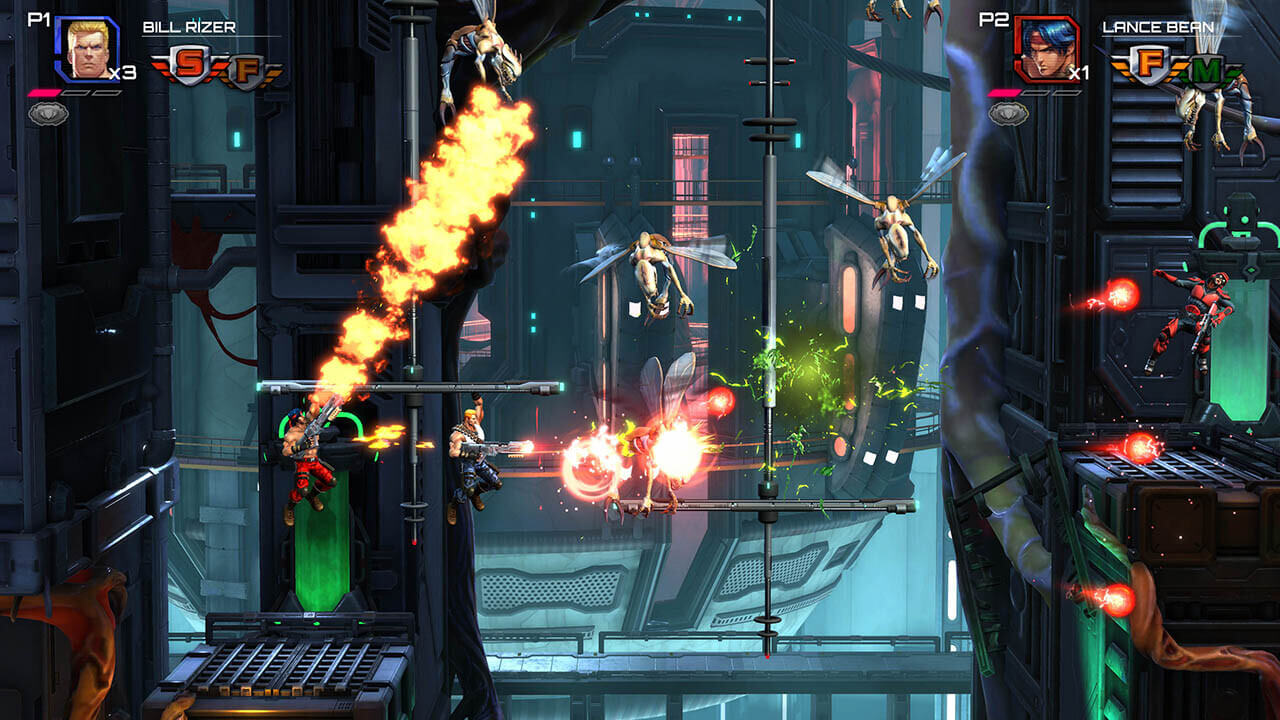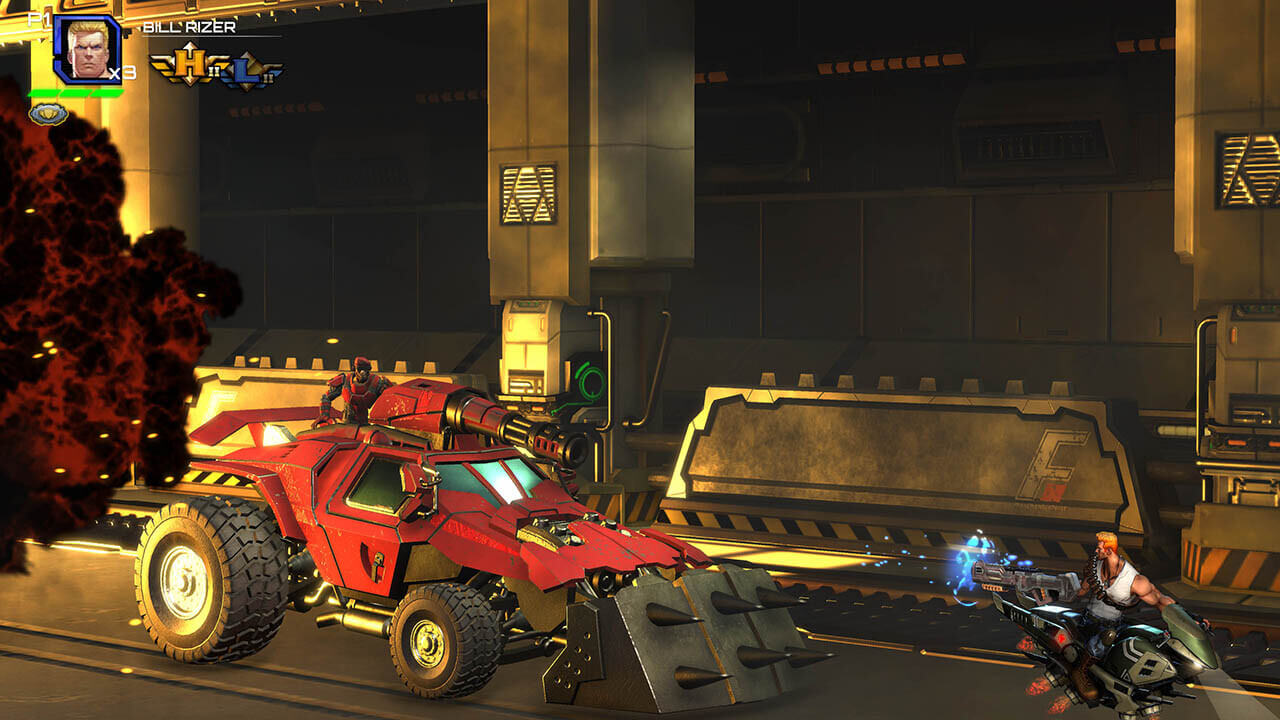Some artists paint with colors on a canvas. Others create with words on a page or notes from a musical instrument. DigiPen graduate George Boden (2016) draws from a different kind of palette, one that relies on concepts like geometry, projectile patterns, and enemy placement — to name a few. As a level designer at WayForward Technologies, a game studio renowned for their retro-inspired throwbacks, he specializes in crafting side-scrolling gauntlets of action and mayhem that both challenge and delight.
Case in point, consider one of his studio’s latest projects — Contra: Operation Galuga, a modern revival of one of gaming’s most celebrated action platformers. Released last March for PC and consoles, this newest outing in the long-running series sees up to four players blasting an army’s worth of hostile forces across eight stages spanning a tropical jungle, enemy fortress, festering alien hive, and more.
“It’s got a little bit of DNA from all the classic Contras,” Boden says. “It’s meant to be a good starting point for someone who might be new to the series, and also a good continuation point for people who are veterans.”

As a dedicated level designer for the project, Boden’s task was no minor one. Not only did he serve as architect for multiple stages in the game — building out the platforms and obstacles players navigate on their mission to topple the villainous Red Falcon terrorist organization; he also had to balance the stages’ enemy encounters for a wide spectrum of player types and skill levels.
“I personally consider it to be both the easiest and the hardest Contra, depending on which settings you give it,” Boden says.
For many gamers of a certain age, the Contra series is perhaps most fondly remembered not only for the original game’s 1988 home console port on the Nintendo Entertainment System, but also for a certain cheat programmed into that version of the game. Often referred to as the “Konami code,” it was a series of button inputs that, when activated at the right time, granted players 30 lives. That not-so-secret cheat proved a welcome crutch in an otherwise notoriously difficult game, where any mistimed step could result in getting hit by wayward bullets or charging enemies on screen.
In a similar spirit, Boden points to a suite of built-in features within the design of Operation Galuga meant to give a friendly boost to players who need it. In addition to selectable difficulty modes, players can purchase optional perks through the course of the game that can help make their adventure easier. They can also choose whether to play with a life bar or opt for a more extreme one-hit rule, where any damage taken instantly loses a life.
“I’ve been delighted to see even some of the most veteran players struggling to play the game on the hardest difficulty on one-hit mode without perks,” Boden says. “It’s also been nice to see players who are much newer playing on the easiest difficulty with a health bar who are able to — slowly but surely — brute force their way through the entire game.”
Boden’s own journey into game development was not quite the precise linear adventure found in many of his company’s games. In fact, his initial career aspirations were in a separate field altogether.
“When I graduated from high school, my plan at the time was to get into film. So I spent about a year in film school, and I found that it wasn’t for me,” Boden recalls. “I started exploring other avenues, and I realized I had spent much more time learning and mastering video games than I ever did with film.”
His explorations eventually led him to enroll in the BA in Game Design program at DigiPen. For Boden, it was the first time he felt truly incentivized in an academic setting. Being immersed in a collaborative environment, he says, also helped him develop a range of interpersonal skills he would not have acquired on his own.
“I think that’s something every game designer should have experience with — just knowing how to work with people, how to disagree with people,” Boden says. “I’ve never been very motivated when it comes to school, so having the motivation of being able to work with games, with something that I had a passion for and something that I wanted to improve at as much as possible, was the drive I needed.”
It was also during his time at DigiPen that Boden identified WayForward as a company he might like to join later on.

“I’ve been a fan of WayForward almost as long as I’ve been playing video games, but a lot of that was without me even realizing it,” Boden says, noting his longstanding appreciation for the studio’s retro-inspired titles like Bloodrayne Betrayal, Double Dragon Neon, and A Boy and His Blob. “I started noticing there’s this company called WayForward that pops up at the beginning of every one of these games. That ended up developing into, ‘These are not only games I enjoy — these seem like the kinds of games I would love to work on.’”
That opportunity would eventually arrive less than three years after graduating from DigiPen. After launching his professional career at mobile games outfit Kooapps, followed by a brief stint as an independent developer, Boden came across WayForward’s job posting for a level design position in late 2018.
I’ve been a fan of WayForward almost as long as I’ve been playing video games.
The timing was fortuitous. Having recently applied to a separate design position at another game studio, Boden was already equipped with an in-depth level design analysis, which the prior studio had requested as part of their own interview process. The game Boden had chosen to analyze was none other than one of WayForward’s most popular games, Shantae: Half-Genie Hero.
“I took all the resources from that one application, reworked my cover letter, and just sent it all to WayForward,” Boden says.
There were two other things working in Boden’s favor as well, which might have contributed to him landing the job.
“I had just previously played through The Mummy Demastered, which WayForward had just finished, and I was able to talk about what I liked in the design of that game during my interview,” Boden says. “And I had just recently gotten the world-record speedrun for Alien Hominid.”
Although the latter game was not a WayForward title, his expertise with the cult-classic sci-fi shooter only further bolstered his credentials as an expert in the run-and-gun genre. That expertise would come in handy on Boden’s first WayForward project, Spidersaurs — a 2019 run-and-gun shooter heavily inspired by the Contra series and Saturday morning cartoons.
When he later found out he’d be getting the chance to apply those same skills toward an actual Contra remake, he was excited, if slightly intimidated.
“The main thought that kept going through my head was, ‘I’d better get it right,’” he recalls.

So how does one go about designing levels for a modernized 2D action game? For Boden, it starts with a series of questions. Is there a design philosophy that the level in question is attempting to replicate? Is there a particular enemy type or gameplay mechanic that’s being introduced in a given level, and if so, what’s the best way to teach the player?
“What always takes the highest priority for me is the stuff that’s new and exclusive to the stage,” Boden says.
In the case of Operation Galuga, Boden found himself pondering how to reimagine an entire game’s worth of iconic levels for a new generation. Whereas some of the original Contra levels carried forward in recognizable fashion — such as the game’s opening blitz through a tropical jungle or a later vertical ascent atop a cascading waterfall — other stages evolved more dramatically.
If I’ve got a pencil and an eraser, I just sketch, re-sketch, scribble, erase, and I could make a thousand levels in a minute.
One infamous stage that previously saw players running through a maze of underground tunnels from a quasi-3D perspective became a fast-paced hoverbike level. Similarly, a late-game ice stage from the original Contra maintained the snowy environment but transported the action onto a speeding military transport vehicle.
“On the NES, you have these long flat platforms with these gunners attacking you from the sides,” Boden says. “And the question becomes: How would that look if it was on a train?”
With these types of questions in mind, Boden says his initial layout designs always begin with pencil and paper, a mode that allows him to rapidly give form to numerous ideas and expressions before ever touching a level editor program.
“If I’ve got a pencil and an eraser, I just sketch, re-sketch, scribble, erase, and I could make a thousand levels in a minute,” he says. “I look through that and I see what looks interesting, what doesn’t.”

From there, it’s a long and exhaustive iterative process that can last for almost the entire duration of the project’s development. Even when the game is released, however, Boden doesn’t consider his work quite finished, as there are still lessons to be learned and carried forward into the next project.
“When a game comes out, I usually go and watch as many people as I can play it,” Boden says. “I think that’s when a lot of the most useful feedback comes in — being able to see people’s first impressions.”
Now with his newest project under his belt, Boden says he’s thrilled with the warm reception Operation Galuga has received so far.
“It’s very much following in the footsteps of giants. This is a game series that’s existed longer than I’ve been alive,” he says. “But being able to see people play this and fall in love with it in the same way they would one of those greats, it’s a great feeling.”
